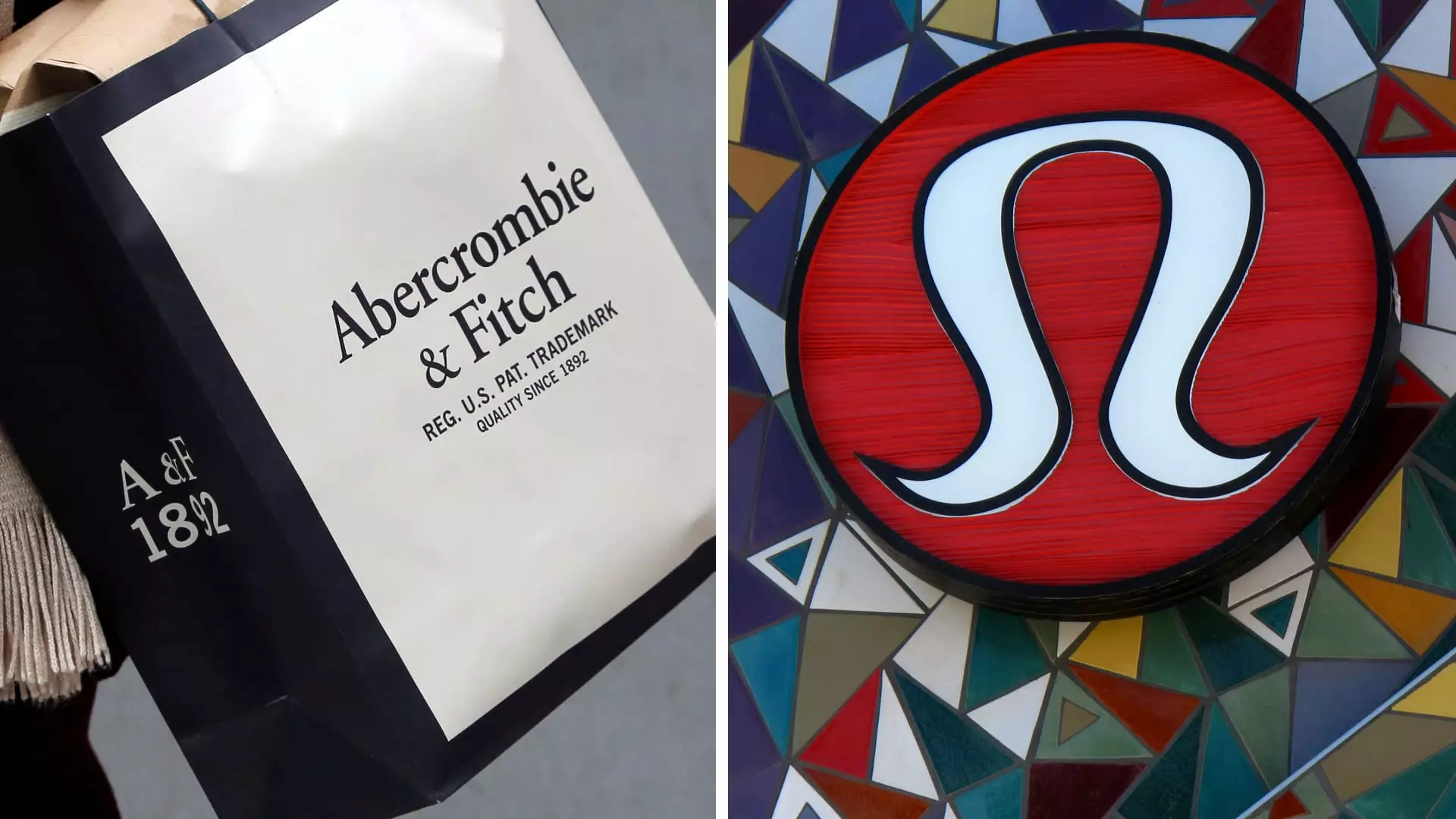As the year draws to a close, the holiday shopping season typically serves as an important barometer for retail health. This year provided a mixed narrative for several major retailers, which reported earnings that, while largely exceeding anticipations, led to a paradoxical decline in stock prices. Key players such as Lululemon, Abercrombie & Fitch, and American Eagle saw promising demand from shoppers during this critical period, yet their shares dropped significantly. This article delves into the factors influencing investor sentiment, the implications for future growth, and the overarching retail landscape as the economy navigates through evolving consumer habits.
The expectation for a bustling holiday season was partially met, with notable retailers reporting financial figures that surpassed forecasts. Lululemon, a standout in the athleisure sector, projected a fourth-quarter sales increase between 11% and 12%, raising its previous estimates. Moreover, not only did it revise its sales outlook upward, but it also anticipated growth in earnings per share, evidencing the brand’s adaptability in a fluctuating market. However, despite these upbeat forecasts, the response from Wall Street was tepid at best, marking a concerning trend where strong operational performance does not necessarily translate into investor confidence.
Abercrombie & Fitch mirrored Lululemon’s trajectory, adjusting its growth expectations for the holiday quarter to between 7% and 8%. Yet, these numbers represent a stark contrast to the previous year’s phenomenal 21% uptick in sales during the same timeframe. Investors, who had become accustomed to consistent double-digit growth, now face skepticism as the apparel company transitions into a maturation phase of its business cycle, likely leading to slower growth rates. The plunge in Abercrombie’s stock, which fell by about 20%, raises questions about its future growth potential and investor sentiments.
The Investor Mood: Anxiety Amidst Growth Projections
The apprehension among financiers, even when faced with positive growth estimates, paints a picture of cautious optimism clouded by uncertainty. After experiencing two years marked by explosive growth, some investors appear to be grappling with the reality of more conservative forecasts from companies like Abercrombie. This sentiment is amplified by the backdrop of a holiday season that, while showing signs of resilience, is not predicted to produce the dramatic numbers seen post-pandemic.
As companies like Urban Outfitters and American Eagle followed suit and released their early holiday results, both too faced share declines. Urban reported a 10% increase in net sales, but its underwhelming performance in some of its brands raised red flags among analysts. American Eagle managed to increase its management outlook lightly, but the company’s overall revenues were expected to dip due to timing issues in its fiscal calendar. The decline in stock prices among these retailers suggests that investors are weighing a consumer environment that lacks the frothy exuberance witnessed previously.
Overall, the retail landscape as it stands illustrates considerable potential for growth tempered by realistic assessments of consumer behavior. The National Retail Federation’s projections, which indicate year-over-year growth between 2.5% and 3.5%, reflect tempered expectations in a climate where inflation remains a significant factor. Consumers are projected to spend cautiously, navigating a wide array of economic variables.
As companies prepare for a new year, they must consider not only growing their sales but also enhancing their profitability—a shift exemplified by Abercrombie’s CEO Fran Horowitz, who emphasized the importance of “driving long-term shareholder value.” Brands appear to be recalibrating their strategies, recognizing that sustained growth will require more than just increased sales volumes; profit margins and operational efficiency are now at the forefront.
While the holiday season showed promising demand, the accompanying dip in stock prices serves as a clear indicator that investor confidence may lag behind operational success. Retailers are now left to navigate a more complex landscape as they adjust their strategies to foster sustainable profitability. Moving forward, aligning growth strategies with market realities will be essential for these brands as they seek to engage and retain their customer base in an ever-evolving retail environment. The forthcoming year beckons the promise of growth, albeit one that demands a vigilant, strategic, and adaptive approach in a world reshaped by shifting consumer expectations and economic factors.



Leave a Reply